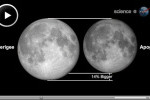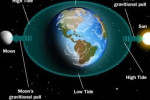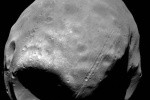 6 Terms
6 TermsHome > Industry/Domain > Astronomy > Moon
Moon
The Earth's only natural satellite. The moon has a cold, dry orb covered with many lunar craters and strewn with rocks and dust. The moon has no atmosphere. But recent lunar missions have found plenty frozen water on the moon.
Industry: Astronomy
Add a new termContributors in Moon
Moon
terminator
Astronomy; Moon
The line which delimits night (shadowed portion) and day (sunlit portion) on a celestial body. The Moon's phases illustrate this.

super moon
Astronomy; Moon
The largest and brightest full moon of the year, caused by the Moon's oval orbit of the Earth. The point where the moon is at perigee and appears to be 14% larger, as it is 50km closer to the Earth ...
tidal locking
Astronomy; Moon
Also known as synchronous rotation, tidal locking is when an orbiting satellite's rotational period is the same as it's orbiting period. As a result, one hemisphere is always facing the object being ...
synchronous orbit
Astronomy; Moon
An orbit in which the orbiting satellite's period is the same as the rotational period of the object being orbited around. An example of such an orbit is Pluto's moon Charon. Artificial satellites ...

rotation of the moon
Astronomy; Moon
The same side of the Moon always faces the earth. The moon's rotation period id synchronous with its revolution period around he Earth.




